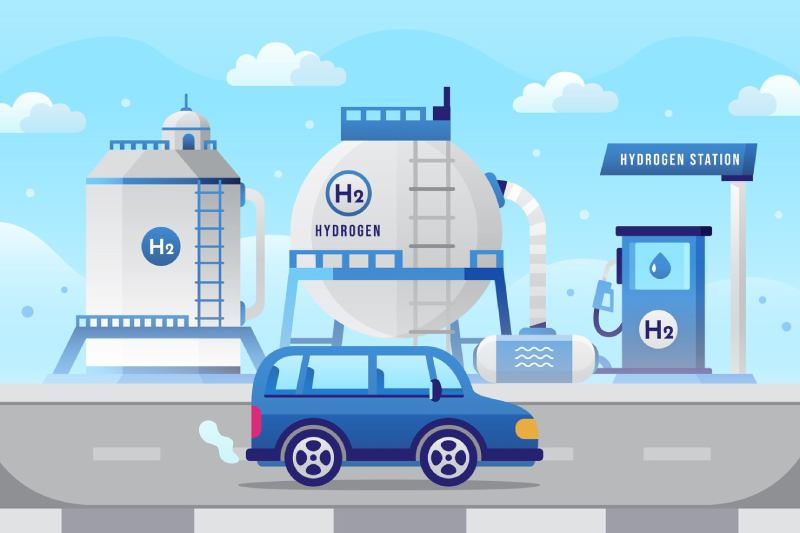Hungary is a landlocked nation situated in Central and Eastern Europe, covering an area of 93,030 square kilometers within the Carpathian Basin. Economically, Hungary is classified as a high-income country with a strong manufacturing base. In 2025, it reported a nominal GDP of approximately US 245 billion dollars, translating to around 25,700 dollars per capita for its population of 9.6 million. The economy benefits significantly from foreign direct investment, particularly in the automotive and electronics sectors, which bolster its export capacity and industrial production. With an employment rate nearing eighty percent, Hungary ranks forty-third globally on the Human Development Index, reflecting its overall socio-economic development.
The Hungarian power sector is undergoing a substantial transformation toward cleaner energy. In 2023, sixty-seven percent of its electricity was generated from carbon-free sources, with nuclear energy contributing 45 percent and solar power 25 percent. Solar photovoltaic (PV) technology has emerged as the fastest-growing segment, with 5.8 GW installed by the end of 2023—making it the highest solar share in the European Union. Wind energy, however, remains underdeveloped at around 330 MW, though new legislation introduced in 2024 is paving the way for broader deployment. Nuclear power, primarily from the Paks I and II plants, continues to provide a stable and low-carbon foundation, supplying roughly 44 percent of Hungary’s electricity needs.
Hungary is well-positioned to become a regional leader in green hydrogen development, thanks to its abundant renewable and low-carbon energy resources. With surplus capacity in solar and nuclear power, the country enjoys a stable and affordable electricity supply—ideal for powering electrolysis processes to produce green hydrogen. Its robust industrial and manufacturing base, particularly in energy-intensive sectors, presents a significant opportunity for hydrogen-based decarbonization, helping to reduce emissions intensity. By integrating green hydrogen and power-to-gas technologies, Hungary can enhance its energy security and flexibility, potentially emerging as a hydrogen export hub within Central and Eastern Europe. Furthermore, under the European Union’s Green Deal and Important Projects of Common European Interest (IPCEI) frameworks, Hungary stands to access substantial funding to scale its hydrogen ecosystem, including the development of hydrogen valleys and infrastructure.
General Information
![]()
Hungary is proactively developing green hydrogen capacity, leveraging its renewable energy growth and nuclear excess output for electrolysis. Hydrogen use is set to grow in:
- Industry, replacing grey hydrogen in ammonia, petrochemical, cement, steel, and chemical sectors.
- Transport, with targets for heavy vehicles, buses, garbage trucks, and at least 20 hydrogen refuelling stations operational by 2030.
The 2021 National Hydrogen Strategy outlines:
- 2030 production targets of 36 kt H₂/y with 240 MW electrolyser units.
- Policies enabling 2 percent hydrogen blending in gas pipelines and building storage capacity through gas network adaptation pilots.
- Establishment of hydrogen valleys in Transdanubia and Northeast Hungary as demonstration hubs.
- Support for R&D and manufacturing, including a National Hydrogen Technology Laboratory and SME participation.
Industry decarbonisation is prioritized—low-carbon hydrogen will lead up to 2030, paving the way for green hydrogen dominance post-2030.
INFRASTRUCTURE

Hungary’s renewable infrastructure is anchored by a rapid expansion in solar PV, modest hydropower, and an emerging geothermal sector. According to IRENA (2025), Hungary has seen a significant shift toward solar-led generation, supported by ongoing grid flexibility and energy storage measures.
- Solar Photovoltaic (PV): Hungary has witnessed a tenfold increase in solar capacity over the last decade. By end‑2023, installed PV capacity had reached approximately 5.8 GW, accounting for ~24.8 percent of electricity generation in 2024. Hungary has surpassed its 2030 solar target (6 GW) six years early, with projections exceeding 7.6 GW by 2025. This positions Hungary among the EU’s top performers in solar share.
- Wind Energy: Wind capacity remains low at ~330 MW, largely stagnant due to restrictive 2016 siting laws. However, in January 2024, regulatory reforms were announced to ease spatial restrictions, enabling potential growth in onshore wind and balancing solar intermittency.
- Hydropower: Hungary’s hydropower generation remains limited, with small and medium-scale plants such as Tiszalök and Kisköre contributing a minor share (~40–60 MW total). With geographical and ecological constraints, no large-scale expansion is anticipated.
- Geothermal Energy: Hungary is a regional leader in geothermal district heating, with about 45 MW thermal capacity (e.g., Miskolc, Szeged, Győr) and growing electricity generation (e.g., Tura 2.3 MW plant). Geothermal is now being explored as a potential baseload energy source for hydrogen production, especially in regional hydrogen valleys.
- Bioenergy and Waste-to-Energy: Biomass and biogas account for approximately 4–6% of Hungary’s electricity mix. These technologies are used primarily in co-firing and waste management, offering dispatchable power that complements variable renewables.
- Grid Flexibility and Storage: The sharp rise in solar capacity has accelerated efforts in grid digitalization, battery storage, and power-to-gas (P2G) solutions. Hungary is exploring hydrogen blending pilots and hydrogen-ready CCGT gas turbines, including plans to retrofit the Mátra power plant for 30 percent H₂ co-firing. These efforts position Hungary for deep decarbonization and seasonal energy storage.
At present, Hungary lacks domestic manufacturing of electrolysers or large-scale hydrogen equipment.
- MOL Százhalombatta 10 MW Electrolyser: Hungary’s flagship green hydrogen project at MOL’s refinery uses renewable electricity to produce ~1,600 t/year of green hydrogen, reducing ~25 kt CO₂/year. This facility is the largest in Central and Eastern Europe and serves as a launchpad for MOL’s scale-up target of 100 MW green hydrogen capacity by 2030.
- Hydrogen Valleys and Regional Clusters: The National Hydrogen Strategy envisions two “hydrogen valleys” in Transdanubia and Northeastern Hungary, aimed at integrating renewable hydrogen production, industrial demand, and transport infrastructure. These clusters will include storage, distribution, and end-use facilities (buses, trains, industry).
- Power-to-Gas Pilots: Hungary is investing in pilot blending programs to inject hydrogen into existing gas pipelines, supported by regulatory sandboxes. Demonstrations are planned near industrial hubs and energy-intensive zones.
